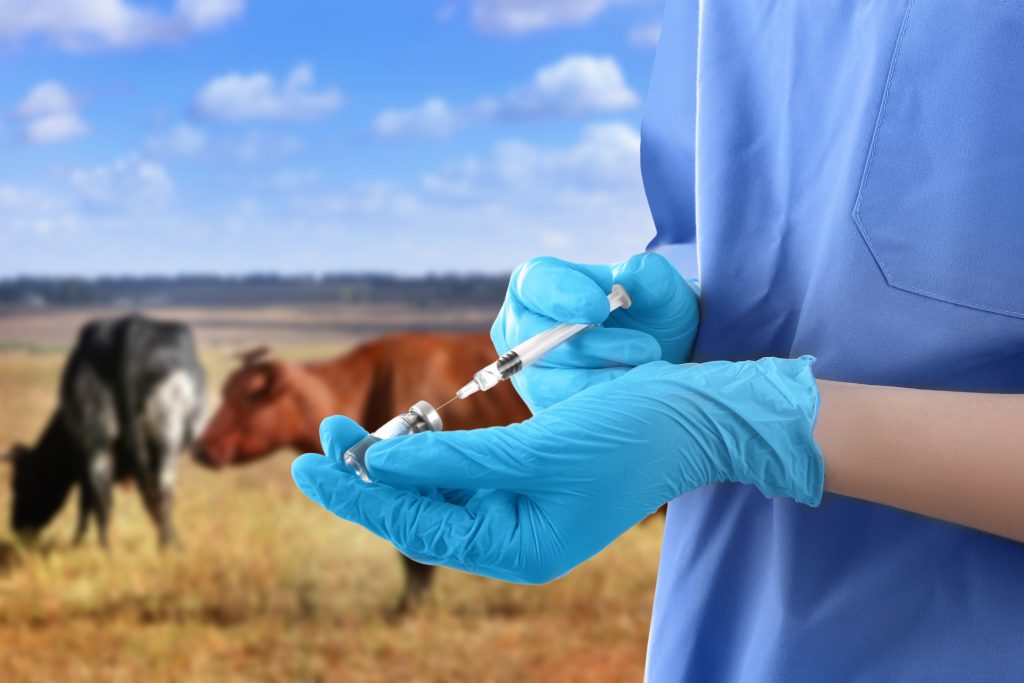
Rabies is a fatal viral disease that affects the central nervous system of all mammals. The disease has no cure and poses a significant risk to human and animal health. Understanding how rabies is transmitted, recognizing its clinical signs, and implementing preventive measures are important for cattlemen to protect their families, livestock and companion animals.
Rabies is caused by a virus, which primarily spreads through the saliva of infected animals via bites. Wild animals, especially bats, skunks, raccoons, and foxes, are the most common carriers. However, domesticated animals, including dogs, cats, cattle, small ruminants, and horses can also be infected and spread the virus.
From 2022 to 2024, a total of 123 were confirmed positive for rabies in Oklahoma. 15 of the 123 positive cases were cattle. Other species that were positive included skunks, bats, cattle, horses, goats, dogs, cats, and deer. As of March 15, 2025, 8 positive cases have been identified in cattle, dogs, and skunks.
Cattle can become infected through direct contact with positive animals, usually through bites or other breaks in the skin. Close contact between cattle and wildlife or between cattle and infected domestic animals can further facilitate the spread of the disease. Rabies is also a zoonotic disease, meaning it can be transmitted to humans. Cattlemen must take precautions to minimize the risk of exposure to themselves and their families if any animal shows neurological signs consistent with rabies.
Rabies in cattle typically develops within 3 to 12 weeks but can range from several days to up to 6 months. The disease usually progresses in 3 phases. However, the phases are highly variable in clinical signs and variable in length.
1. Prodromal Phase: This early stage is marked by subtle changes in behavior. Cattle may become more nervous or aggressive, exhibit a loss of appetite, and show signs of fever or drooling. They might also appear lethargic or have difficulty swallowing.
2. Excitative Phase: As the disease progresses, cattle may show more noticeable signs of aggression, restlessness, and confusion. In some cases, they may bite or try to attack other animals. Some cattle may also become disoriented or exhibit strange vocalizations.
3. Paralytic Phase: In the final stage of the disease, cattle become progressively paralyzed. The muscles involved in swallowing may become affected, leading to excessive drooling and an inability to eat or drink. Paralysis eventually spreads to the respiratory muscles, leading to death.
Rabies can be prevented through strategies that focus on animal vaccination and wildlife management. Rabies vaccination is not typically included in most herd health protocols but should be strongly considered in rabies-endemic areas, especially for highly valuable seedstock or other animals that are regularly handled by humans. All animals with either high monetary or sentimental value, such as show animals, bulls, and donor females, are recommended to be vaccinated for rabies annually. Additionally, cats, dogs, and horses should always be vaccinated for rabies under the supervision of a veterinarian.
Another effective way to reduce the risk of rabies transmission is to control the presence of wildlife. Producers should consider eliminating food sources that attract wildlife, removing habitats that might harbor rabid animals, and installing barriers to limit wildlife interactions. Monitoring wildlife populations in the area and reporting suspicious behavior in animals can also help identify potential threats.
In the event that animals are bitten or exposed to a potentially rabid animal, immediate action should be taken. This includes isolating the affected animal and contacting a veterinarian. Animal and public health officials should be consulted for post-exposure protocols. In Oklahoma, public health officials can be reached at 405-426-8710, 24 hours a day. Human exposure should always be taken seriously as post-exposure prophylaxis must be administered in a timely fashion to prevent this deadly disease.
Rabies remains a serious threat to both animal and human health. By understanding the risks associated, recognizing the clinical signs of the disease, and taking proactive preventive measures such as vaccination and wildlife control, cattlemen can significantly reduce rabies risk. Preventative strategies are essential to safeguarding all domestic animals at the ranch.

















